So, how fast does a helicopter go?
Well, helicopters, those fascinating aircraft, have long challenged the imagination of aviation lovers and curious minds alike.
But how do they measure up in the world of flight?
How effective can they be in responding to various situations?
Let’s delve into the intriguing world of helicopter performance to uncover just how fast these unique flying machines can travel. Whether you’re a casual observer or a dedicated aviation enthusiast, join us as we lift off to explore helicopter speed limits.
Helicopters and Maximum Speeds
Here’s a quick look at how fast a helicopter goes depending on the model:
| HELICOPTER | CRUISING SPEED | MAXIMUM SPEED |
| UH-60 Black Hawk | 152 kn/175 mph/282 kph | 159 kn/183 mph/294 kph |
| Boeing CH-47 Chinook | 160 kn/184 mph/296 kph | 170 kn/196 mph/315 kph |
| Airbus Helicopters H135/
Eurocopter EC135 |
137 kn/158 mph/254 kph | 140 kn/161 mph/ 259 kph |
| Robinson R44 | 109 kn/125 mph/201 kph | 130 kn/150 mph/240 kph |
| AgustaWestland AW109 Power | 154 kn/177 mph/285 kph | 168 kn193 mph/311 kph |
| Robinson R22 | 96 kn/110 mph/177 kph | 102 kn/117 mph/189 kph |
| Airbus H155 / Eurocopter EC135 | 137 kn/158 mph/254 kph | 155 kn/178 mph/287 kph |
| Boeing AH-64 | 142 kn/165 mph/265 kph | 158 kn/182 mph/293 kph |
| Bell 206 JetRanger/LongRanger | 109 kn/125 mph/201 kph | 120 kn/138 mph/222 kph |
| Eurocopter AS350 Écureuil | 132 kn/152 mph/245 kph | 155 kn/178 mph/287 kph |
| MD 500C | 130 kn/150 mph/240 kph | 135 kn/155 mph/249 kph |
| Bell UH-1 Iroquois | 110 kn/127 mph/204 kph | 129 kn/148 mph/238 kph |
| Bell UH-1N Twin Huey | 110 kn/130 mph/200 kph) | 130 kn/150 mph/240 kph |
How do helicopters fly?
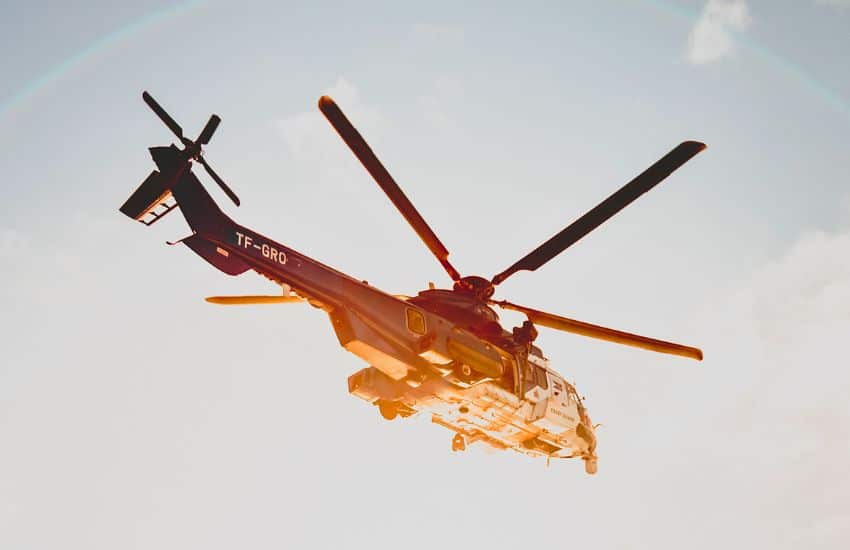
It all starts with the rotor blades, those large spinning wings. When you fire up the engine, these rotor blades begin to rotate, playing a crucial role in keeping your helicopter aloft.
Helicopters, like airplanes, rely on lift to ascend. Its rotor blades are designed like curved wings, and by manipulating their angle, you can control how much lift they generate.
Now, picture the collective control within your reach. It’s a lever for managing the angle of all the blades in the helicopter at once. Raise it, and the blades increase their pitch, producing more lift, which causes the aircraft to lift more. Lower it, and the angle decreases, which leads to descent.
To control your direction, you have the cyclic control, typically a small joystick. This handy device tilts the main rotor disc and adjusts the pitch of the rotor blades as they spin around. Push it forward, and you move forward; pull it back, and you go backward; tilt left, and you veer to the left; tilt right, and you turn right.
Lastly, there’s the tail rotor. It counteracts and balances the torque produced by the main rotor’s rotation, helping with the helicopter’s stability. By adjusting the pitch of the tail rotor, you prevent unwanted spinning in midair.
In addition to lift, your helicopter also has an engine for propulsion. It provides the power needed for the main rotor, which, as the blades spin, generates the thrust needed to move in any direction or even hover in one spot.
Your role as the pilot is to finesse the collective, cyclic, and tail rotor controls to navigate your helicopter through the skies. You can ascend, descend, and maneuver in all directions, all thanks to your control over these essential elements. It’s an art of precision and technology that enables you to explore the world from a unique perspective.
How fast is a Blackhawk helicopter?
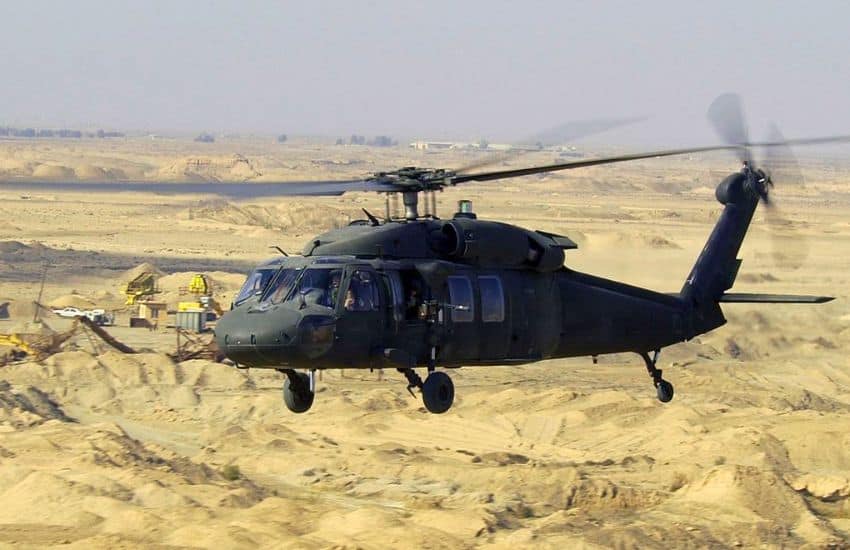
The Black Hawk is a famous aircraft for quick and efficient troop, supply, and equipment transport. It’s one of the best options for various military and civilian applications, making it an indispensable transport for numerous emergencies. The UH-60 Black Hawk helicopter can cruise effortlessly at the speed of approximately 152 knots (kn), which may vary per specific model and configuration. This speed translates to roughly 175 miles per hour (282 kilometers per hour). Blackhawks can also reach its maximum speed of 159 kn (183 mph, 294 km/h) with its four-blade twin engine, but should never go past 193 kn (222 mph, 357 km/h).
How fast is a Chinook helicopter?
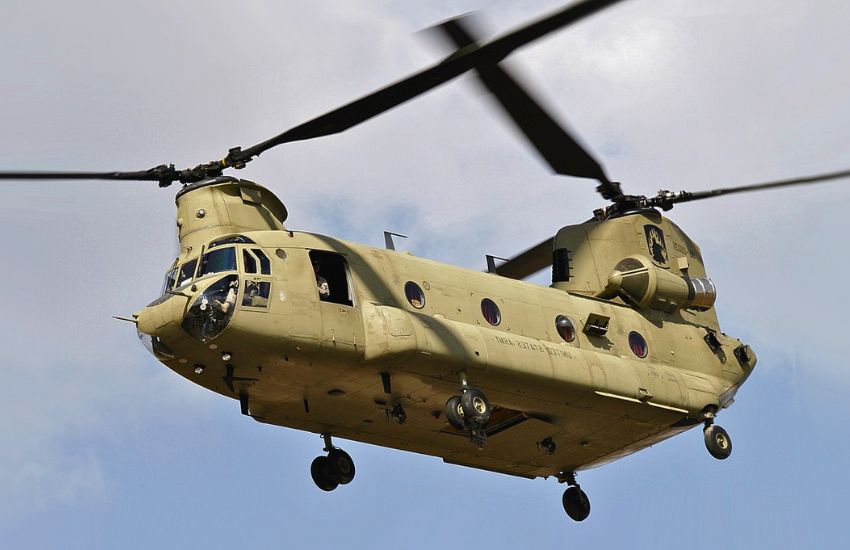
The Boeing CH-47 Chinook has carved a name for itself as a heavy-duty workhorse of the skies. It’s renowned for its excellent capacity to swiftly transport substantial cargo and personnel, making it an invaluable asset in a wide range of military and civilian endeavors. With its distinctive tandem rotor design, this helicopter boasts impressive speed. It boasts a maximum cruising velocity of approximately 160 knots, equivalent to 184 miles per hour or 296 kilometers per hour. When the situation demands, it can push its limits, reaching up to 170 knots, which translates to a swift 196 miles per hour or 315 kilometers per hour with its tandem rotors in full motion.
How fast is a medical helicopter?
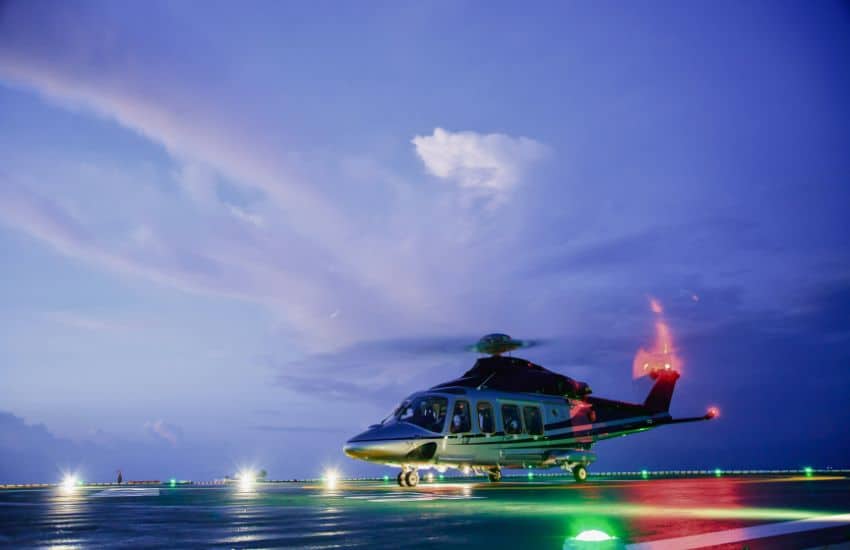
A medical helicopter, like a Eurocopter EC135, offers quick response and efficient transportation of medical personnel and patients, allowing them to get to medical facilities or accident scenes rapidly. Medical helicopters typically have a cruising speed of around 137 knots, roughly 158 mph/254 kph. In extremely crucial situations, these life-savers can zoom midair up to 140 knots or 161 mph/259 kph. However, it’s important to remember that specific speeds can differ based on which helicopter model and its operational requirements.
How fast does a life-flight helicopter go?

The Robinson R44 and AgustaWestland AW109 Power are popular light utility helicopters commonly used for various purposes, including life flight and emergency medical services (EMS), due to their cost-effectiveness and reliability.
The R44 is typically equipped with a Lycoming O-540 engine. It has a cruising speed of 109 knots or 25 mph/202 kph. This speed is suitable for efficiently covering distances during medical transport missions, and pilots can max out its speed up to 130 knots or 150 mph/240 kph. It’s important to note that different operators and mission configurations may influence how fast the R44 can go during life-flight operations.
On the other hand, AgustaWestland AW109 from Leonardo S.p.A (formerly known as AgustaWestland) is typically equipped with two turboshaft engines. Engines from various manufacturers, including Pratt & Whitney Canada and Turbomeca (now Safran Helicopter Engines), have been used in different AW109 models.
The cruising speed of this life aircraft can vary depending on the model, but it generally falls in the range of 154 knots or about 177 mph/285 kph. The maximum speed of the AW109 is 168 knots or 193 mph/311 kph, allowing it to reach patients and transport them to medical facilities swiftly.
How fast does a civilian helicopter go?

Civilian helicopters can exhibit considerable speed variations depending on their specific make and model. These aircraft come in various sizes and are engineered for diverse applications, resulting in substantial differences in their top speeds.
On the lower end of the spectrum, compact civilian helicopters, like the Robinson R22, might attain a maximum cruising speed of approximately 96 knots (equivalent to 110 mph or 177 kph), with a strict limit not to exceed 102 knots or 117 mph (189 kph). These helicopters are frequently utilized for training purposes and short-distance transport.
In contrast, larger and more potent civilian helicopters, exemplified by the Eurocopter EC135, are capable of achieving a cruise velocity of 137 knots (about 158 mph or 254 kph), with a maximum allowable speed that should not surpass 155 knots or 178 mph (287 kph). Such helicopters find applications across a broad spectrum, including medical evacuation, executive travel, and support for offshore oil platforms.
How fast is an Apache helicopter?

Apache helicopters are designed for combat and air support missions, and their overall performance is optimized for maneuverability and speed to operate in various combat scenarios effectively. While it may not be as fast as some fixed-wing fighter aircraft, the Apache’s agility, firepower, and ability to hover make it a highly effective platform for its intended roles on the battlefield. The cruise speed for most Apache variants, including the Boeing AH-64, is typically around 142 knots or 165 mph(265 kph), but it can swiftly go up to 158 knots or 182 mph(293 kph). It can go faster, but it must not go past 197 knots or 227 mph(365 kph).
How fast is a police helicopter?
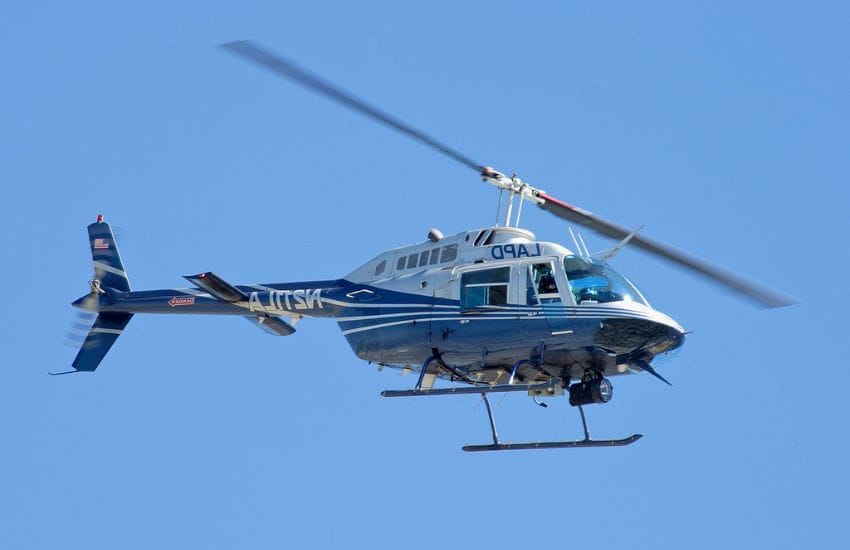
Police helicopters might be slower than fighter jets, but they have their own style. Take the Bell 206 JetRanger/LongRanger – it’s like the reliable sedan of the helicopter world. It cruises at a smooth 109 knots or 125 mph/201 kph, and when it needs to step on it, it can hit up to 120 knots, about 138 mph/222 kph.
Now, the single-engine Eurocopter AS350, or AStar, is a bit of a speedster. It can cruise at 132 knots, or 152 mph/245 kph, and can go faster, but it should never go over 155 knots or 178 mph/287 kph.
And if you’re all about agility and versatility, the MD 500C is your go-to buddy. It can cruise at 130 knots, or about 150 mph/240 kph, and can kick up to a top speed of around 135 knots, that’s 155 mph/249 kph.
How fast is a Huey helicopter?
It’s important to note that the Huey is a versatile utility and transport helicopter primarily designed for troop transport and medical evacuation rather than high-speed operations. Its design emphasizes reliability and durability over top-end speed. The specific speed of a Huey helicopter can also be affected by factors such as altitude, weather conditions, and payload.
The UH-1 Iroquois, commonly known as the “Huey” helicopter, has several variants. The original UH-1H, for example, had a maximum speed of around 129 knots (about 148 miles per hour or 238 kilometers per hour) and cruises at 110 knots (127 mph/204 kph).
However, there have been many upgrades and modifications to the Huey over the years, and the speed can vary depending on factors such as engine type, rotor configuration, and other enhancements. Some modernized versions of the Huey, equipped with more powerful engines and improved aerodynamics, such as the Bell UH-1N Twin Huey, which can cruise at 110 knots (130 mph/200 kph) and max speed of 130 knots (150 mph/240 kph).
What is the fastest helicopter?
Although experimental in design, the Eurocopter X3 achieved higher speeds than conventional helicopters. It is not a production aircraft but was developed to test and demonstrate advanced high-speed helicopter technology. It recorded 255 knots (approximately 293 mph or 472 km/h) in 2013, making it significantly faster than traditional helicopters. Its design incorporates two additional short wings with forward-facing propellers, providing extra lift and thrust to achieve these higher speeds.
Read more about the fastest helicopters here.
How does the speed of helicopters compare to airplanes?
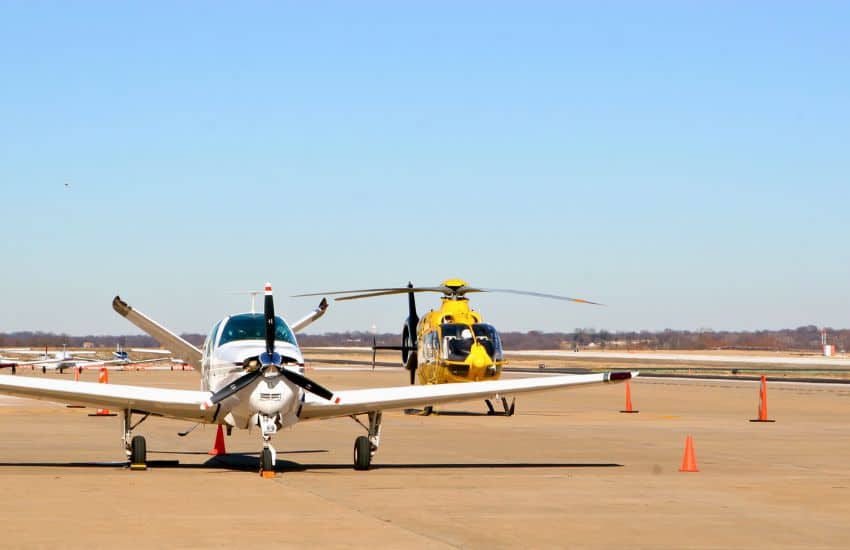
When it comes to speed, airplanes take the lead. For instance, you can witness the incredible velocity of commercial jet airliners, which soar through the skies at astonishing speeds ranging from 500 to 600 miles per hour (805 to 965 kilometers per hour). The pinnacle of high-performance aviation is exemplified by military aircraft, capable of transcending the remarkable 2,000 miles per hour (3,220 kilometers per hour) threshold.
In contrast, helicopters occupy a slower segment of the velocity spectrum. The majority of helicopters are known to reach a top speed of approximately 150 to 200 miles per hour (240 to 320 kilometers per hour), though a few high-performance military helicopters challenge this norm, pushing their limits to 200 to 250 miles per hour (320 to 400 kilometers per hour).
Moving on to cruise speeds, airplanes continue to showcase their prowess. Commercial airliners gracefully maintain velocities within the 400 to 560 miles per hour (645 to 900 kilometers per hour) range. Meanwhile, smaller general aviation aircraft engage in more leisurely flights, typically cruising between 100 and 200 miles per hour (160 to 320 kilometers per hour).
Conversely, helicopters encompass a more comprehensive array of cruise speeds. These rotorcraft generally operate at a slower pace compared to their fixed-wing counterparts, maintaining cruise speeds in the vicinity of 100 to 160 miles per hour (160 to 260 kilometers per hour).
A distinguishing attribute of helicopters that sets them apart from airplanes is their unique ability to hover in place. Imagine an aircraft that can remain stationary in the air—helicopters epitomize this extraordinary capability. It’s a feature that proves indispensable in various missions, including search and rescue operations, precision agricultural tasks, and scenarios requiring vertical takeoff and landing (VTOL) maneuvers.
In the realm of aviation, aircraft speed is not a one-size-fits-all metric. The design and intended purpose of each flying machine significantly influence its velocity capabilities. Airplanes are meticulously engineered for high-speed, long-distance travel, epitomized by commercial airliners traversing continents at remarkable velocities. In contrast, helicopters are lauded for their versatility, enabling them to perform tasks that demand precise hovering and adept maneuvering in confined spaces.
Helicopters are remarkable flying machines that come in a variety of forms, each with its own unique speed capabilities. Despite not matching the top speeds of airplanes, they play crucial roles in multiple fields, from search and rescue to military operations and civilian use. The next time you spot a helicopter in action, remember the intricate engineering that allows them to navigate the skies, reminding us that the possibilities of flight are limitless.
Interested in Helicopters?
Learn more here
How far can a helicopter fly?
Helicopter headset review
What is the fastest helicopter?
How much is a helicopter?
How high can a helicopter fly?
